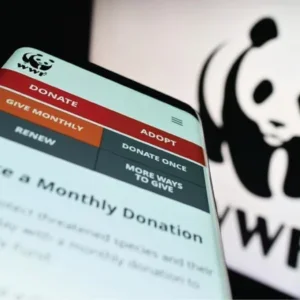
Heavy Texas steers fluctuated in July. Seasonal weights were selling from $22.00 to $25.00. Colorados slipped a little to sell at $21.00–24.00. Automotive hides held their value until the last week as some customers were buying a little more actively. Heavy native steers, in fact, made some modest gains and were selling as high as $41.00 for seasonal weights before dropping a dollar in the final week of July.
While the cow sector started out the month as a bright spot, by the end of the period prices were much weaker. Upholstery tanners in China had slowed activity and pushing prices higher was not possible.
Exports update
June export sales were an improvement over May, and it was much the same for the second quarter versus the first. Weekly rawhide sales in June averaged 423,875. This is 2% higher than the May average but 15% less than in June 2021. For Q2, sales averaged 415,508, which is 5% higher than Q1 and 6% above the second quarter of 2021.
June rawhide shipments averaged 411,975, down by 4% from the May average but 16% higher than in June 2021. For the second quarter of 2022, shipments averaged 426,200, 6% higher than Q1 and 13% more than Q2 of 2021.
With regard to wet-blue, sales averaged 189,900 in June, which is 34% higher than the May average. It is also 50% higher than the June 2021 average. For the second quarter of 2022, weekly wet-blue sales averaged 157,162, 31% higher than in Q1 and 27% more than Q2 last year.
On the other hand, average weekly wet-blue shipments in June were 133,875. This is down 8% from May and 10% from the June 2021 average. In Q2, average weekly wet-blue shipments were 146,323, 11% higher than in Q1 and 8% higher than Q2 of last year.
Cattle numbers
The USDA mid-year cattle inventory showed that on 1 July 2022, it totalled 98.8 million head, 2% below the 101 million head on 1 July 2021.
Cattle and calves on feed for the slaughter market in the US for all feedlots totalled 13.4 million head on 1 July 2022, unchanged from the previous year. Cattle on feed in feedlots with capacity of 1,000 or more head accounted for 84.6% of the total cattle on feed on 1 July 2022, up slightly from the previous year. The total of calves under 500lb and other heifers and steers over 500lb (outside of feedlots), were at 35.7 million head, down 3% from the 36.7 million head on 1 July 2021.
The 2022 calf crop in the US is expected to be 34.6 million head, down 1% from last year. Calves born during the first half of 2022 are estimated at 25.3 million head, down 1% from the first half of 2021. An additional 9.30 million calves are expected to be born during the second half of 2022.
Beef exports boom
US beef exports set new volume and value records in May, topping $1bn for the fourth time this year, according to data released by USDA and compiled by the US Meat Export Federation (USMEF). While pork exports were well below last year’s large totals, shipments were the largest of 2022 in both volume and value. US lamb exports continued to trend higher, led by growth in the Caribbean and Mexico.
May beef exports reached 135,006 metric tons (t), up 1% from the previous high posted in May 2021. Export value climbed 20% to $1.09bn, breaking the March 2022 record. For January through May, beef exports increased 4% from a year ago to 613,266t, valued at $5.14bn (up 34%).
“For US beef exports to maintain a $1bn-per-month pace is tremendous under any circumstances, but it is especially remarkable given the strong US dollar, continued shipping and logistical challenges and the economic uncertainty our industry and international customers face today,” said USMEF president and CEO Dan Halstrom.
Shipping congestion
West coast shipping congestion continued to ease but, in late July, truckers striking at the Port of Oakland caused disruption. They were protesting California’s gig worker labour law. A two-year legal stay was recently lifted when the Supreme Court decided not to hear a case that would have protected truckers from the impact of the law.
Securing equipment was still a big issue for US hide sellers. At least a looming freight rail strike was averted in mid-July. US President Joe Biden signed an executive order creating an emergency board to help resolve the disputes between major freight rail carriers and their unions. The order was just days ahead of a threatened strike.
Hide market
Sellers started July still pushing for higher prices. As the days went by, however, their fire began to fade. In fact, prices eased a little off of their June highs for a number of reasons. First, most high-priced sales were logged on small volumes. In addition, new sales were difficult and the back and forth with customers took longer than usual to come to an agreement – or not.
Ultimately, there was just not enough demand to support higher market levels. Orders were slow for many tanners. In fact, some sellers expressed concern for what July would bring overall and what the state of US hide sales will be by the end of the month. Along the way, some automotive customers were signalling a glimmer of hope, but furniture sales were on the decline and footwear orders were not what they should be. The outlook for consumer demand remains murky and for the hide market also.
Gas prices may be easing and a recession in the US is not certain, but the global economic situation is still difficult. For the time being, it appears that demand will remain depressed.
Some sources who attended Lineapelle in New York in mid-July said that only the luxury brands are very active and cited Italian tanners who noted that other segments are still very slow.
What a difference a year makes
In July last year, the US hide market was at the peak of 2021 prices. Some steer prices were nearly double what they are currently. Oddly, despite cheap prices, the 2022 market is again seeing low demand, but for a host of different reasons. Some hardly need explanation: the Ukraine conflict, shortages of chips and parts, inflation, China’s Covid policy, for example.
With regard to sales, then as now, some packers reported a few modest price increases. The negative is that those prices were on small volumes. In fact, producers said a big concern was the lack of volume on bids at any price. Others had to take a little less to make the sales.
So far in 2022, the trajectory of the steer market has followed that of 2019. If it continues for the rest of the year, the market will move sideways for most of the period and this is what many sources are expecting. We’re now halfway through 2022 and, in July 2021, we were marking an astounding recovery period for hides. That brought prices back up to levels not seen since Q1 of 2018. Another year, and another very different market.






